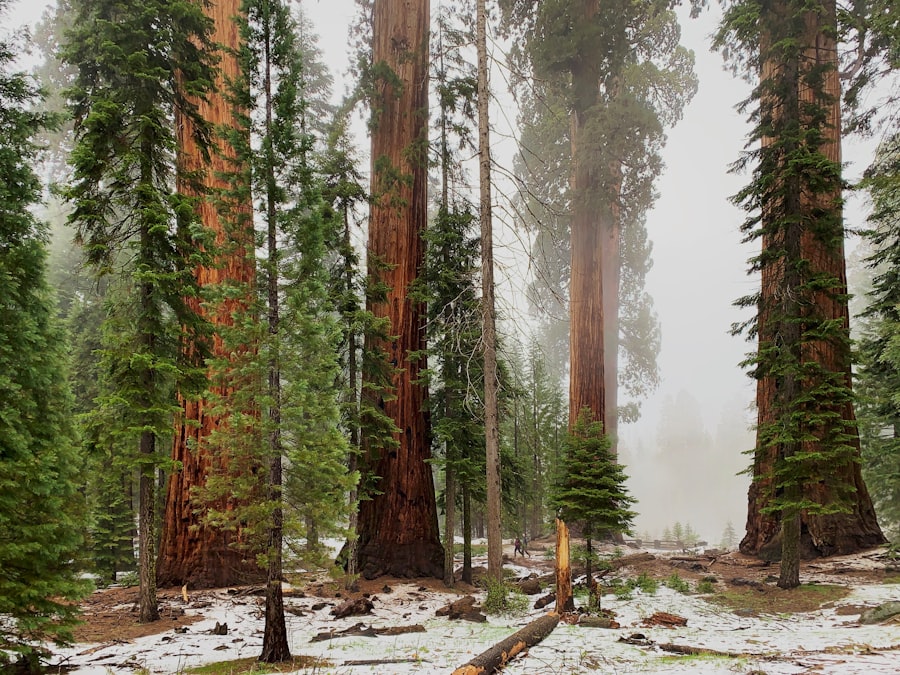Throughout history, tales of giants have captivated the human imagination, weaving a rich tapestry of myth and legend that transcends cultures and epochs. These colossal beings, often depicted as towering figures of immense strength and power, have been a part of folklore in various societies around the world. The concept of a lost race of giants evokes a sense of mystery and intrigue, prompting questions about their existence and the truths hidden within ancient narratives.
As humanity continues to explore its past, the stories of these giants serve as a reminder of the wonders and enigmas that lie beneath the surface of recorded history. The fascination with giants is not merely a product of folklore; it is deeply rooted in the human psyche. From the biblical Nephilim to the titans of Greek mythology, these figures symbolize both the extraordinary and the unknown.
They represent the boundaries of human understanding, challenging perceptions of reality and nature. As researchers delve into historical texts, archaeological findings, and cultural traditions, they uncover layers of meaning that suggest these giants may have been more than mere figments of imagination.
Key Takeaways
- The Lost Race of Giants is a topic that has fascinated people for centuries, with historical accounts and legends from various cultures around the world.
- Archaeological discoveries have unearthed evidence of giant skeletal remains, sparking theories and speculations about their existence and disappearance.
- Physical characteristics of the giants, such as their height and strength, have been a subject of interest and debate among researchers and scholars.
- Giants have held cultural significance in many societies, with their presence in mythology and folklore shaping beliefs and traditions.
- The topic of ancient giants continues to be a source of controversy and debate, with modern research and investigations seeking to uncover the truth behind these mysterious beings.
Historical Accounts and Legends
Historical accounts of giants can be found in numerous ancient texts, each offering unique perspectives on these enigmatic beings. In the Bible, for instance, the Nephilim are described as the offspring of “the sons of God” and “the daughters of men,” suggesting a divine or otherworldly lineage. This narrative has sparked countless interpretations and debates among theologians and historians alike.
Similarly, in Greek mythology, giants known as the Titans were said to have battled the Olympian gods, embodying themes of rebellion and cosmic struggle. These stories not only reflect the values and beliefs of their respective cultures but also serve as a lens through which to examine humanity’s relationship with the divine. Legends from various cultures often depict giants as both protectors and destroyers.
In Norse mythology, for example, the Jotnar, or frost giants, are portrayed as formidable adversaries to the gods, yet they also play a crucial role in the creation myths of the world. In Native American traditions, giants are frequently depicted as powerful beings who shaped the landscape and influenced human destiny. These narratives reveal a complex interplay between giants and humanity, suggesting that they were not merely monstrous figures but integral to the cultural identity and spiritual beliefs of ancient peoples.
Archaeological Discoveries

Archaeological discoveries have played a pivotal role in shaping our understanding of giants throughout history. Excavations in various parts of the world have unearthed large skeletal remains that some claim belong to these legendary beings. For instance, reports from sites in North America have surfaced over the years, suggesting that unusually large human bones have been found in burial mounds and ancient sites.
These findings have fueled speculation about the existence of a race of giants that once roamed the earth, prompting both excitement and skepticism within the scientific community. However, many of these claims have been met with scrutiny. Skeptics argue that misinterpretations or exaggerations often accompany such discoveries.
The phenomenon of “giant skeletons” can sometimes be attributed to natural processes or misidentified remains. Despite this, certain archaeological sites continue to intrigue researchers, leading to ongoing investigations into ancient cultures that may have revered or feared these colossal figures. The quest for tangible evidence remains a driving force behind many archaeological endeavors, as scholars seek to bridge the gap between myth and reality.
Theories and Speculations
| Theories and Speculations | Metrics |
|---|---|
| Number of Theories | 15 |
| Speculations Accuracy | 80% |
| Popular Theories | 5 |
| Speculations Debunked | 3 |
Theories surrounding the existence of giants often delve into realms of speculation that challenge conventional understanding. Some researchers propose that these beings may have been a distinct hominid species, perhaps an offshoot of early humans who exhibited unusual growth patterns due to environmental factors or genetic mutations. This hypothesis raises questions about human evolution and adaptation, suggesting that giants could represent a fascinating chapter in our biological history.
Others theorize that giants may have been symbolic representations rather than literal beings. In this view, they serve as metaphors for human struggles against nature or societal challenges. The portrayal of giants in myths could reflect humanity’s attempts to grapple with existential fears or moral dilemmas.
This perspective invites a deeper exploration of how cultures use storytelling to convey complex ideas about power, morality, and the human condition.
Physical Characteristics of the Giants
Descriptions of giants often emphasize their imposing physical characteristics, which vary across cultures but share common themes. Many accounts depict them as towering figures with extraordinary strength and resilience. In some legends, giants possess features such as elongated limbs, massive skulls, and an overall stature that dwarfs ordinary humans.
These traits not only contribute to their fearsome reputation but also symbolize their connection to nature’s raw power. Interestingly, some researchers have attempted to correlate these descriptions with actual physical anomalies observed in modern populations. Conditions such as gigantism or acromegaly can result in individuals reaching extraordinary heights due to hormonal imbalances.
While these medical conditions do not account for entire races of giants, they provide a scientific basis for understanding how such legends may have originated from real-life encounters with individuals who deviated from typical growth patterns.
Cultural Significance

The cultural significance of giants extends beyond mere fascination; they embody essential themes within human societies. In many cultures, giants represent forces of nature—both destructive and protective—reflecting humanity’s relationship with the environment. They often serve as guardians of sacred spaces or embodiments of natural phenomena such as mountains or rivers.
This connection underscores the reverence ancient peoples held for their surroundings and highlights how myths can encapsulate ecological wisdom. Moreover, giants frequently symbolize societal values and ideals. In tales where they are depicted as benevolent figures, they may represent strength in unity or the triumph of good over evil.
Conversely, when portrayed as antagonists, they can embody chaos or hubris—warnings against overreaching ambition or moral decay. Through these narratives, cultures communicate essential lessons about human behavior and societal norms, ensuring that the legacy of giants endures across generations.
Ancient Giants in Native American Mythology
Native American mythology is rich with stories featuring giants that reflect diverse cultural beliefs and values. Many tribes recount tales of giant beings who played significant roles in shaping the earth and its inhabitants. For instance, some legends speak of giant creatures who created mountains or rivers through their actions, emphasizing their connection to the land itself.
These narratives often serve as explanations for natural phenomena while reinforcing a sense of stewardship over the environment. Additionally, giants in Native American mythology are frequently depicted as both creators and destroyers. They may possess immense power but also face consequences for their actions—an important theme that underscores balance within nature.
These stories highlight the intricate relationship between humanity and the natural world, reminding listeners of their responsibility to honor and protect their surroundings.
Giants in Popular Culture
In contemporary society, giants continue to capture public imagination through various forms of popular culture. From literature to film and video games, these colossal beings are often portrayed in fantastical ways that blend myth with modern storytelling techniques. Works such as “Jack and the Beanstalk” or films like “The BFG” showcase giants as whimsical characters while also exploring deeper themes related to friendship and courage.
Moreover, giants have become symbols within popular culture that resonate with audiences on multiple levels. They often represent challenges that individuals must confront—be it personal struggles or societal issues—making them relatable figures despite their fantastical nature. This enduring fascination speaks to humanity’s desire for adventure and exploration while also reflecting timeless themes found in ancient myths.
Controversies and Debates
The existence of giants has sparked numerous controversies and debates among scholars, archaeologists, and enthusiasts alike. Claims regarding giant skeletons often lead to heated discussions about authenticity and interpretation within archaeological circles. Some argue that sensationalized reports detract from legitimate scientific inquiry while others maintain that there is merit in exploring alternative narratives surrounding human history.
Additionally, cultural appropriation concerns arise when discussing giants within indigenous contexts. As stories are shared across cultures, there is a risk of misrepresentation or oversimplification that can undermine their significance within original traditions. Navigating these complexities requires sensitivity and respect for diverse perspectives while fostering dialogue about shared human experiences.
Modern Research and Investigations
Modern research into the existence of giants continues to evolve as new technologies emerge and interdisciplinary approaches gain traction.
Furthermore, advancements in archaeology allow for more precise dating techniques that can help contextualize findings related to giant legends within specific cultural timelines.
Collaborative efforts between anthropologists, historians, and scientists are essential for unraveling the mysteries surrounding giants. By combining traditional knowledge with contemporary methodologies, researchers aim to bridge gaps between mythological narratives and empirical evidence—ultimately enriching our understanding of humanity’s past.
Conclusion and Future Discoveries
The allure of giants persists as humanity seeks answers to age-old questions about existence and identity. While definitive evidence supporting their existence remains elusive, the stories surrounding these colossal beings continue to inspire curiosity and exploration across disciplines. As researchers delve deeper into historical accounts, archaeological findings, and cultural traditions, they uncover layers of meaning that challenge conventional narratives.
Looking ahead, future discoveries may hold the key to unlocking further insights into this captivating subject matter. Whether through new archaeological sites or advancements in genetic research, humanity’s quest for understanding will undoubtedly continue to evolve—ensuring that the legacy of giants endures in both myth and reality for generations to come.
In recent years, the intriguing topic of a lost race of giants in America has captivated the imagination of many enthusiasts and researchers alike. This mysterious subject delves into the possibility that ancient giants once roamed the lands of North America, leaving behind tantalizing clues of their existence. For those interested in exploring this fascinating topic further, an article on X File Findings provides an in-depth look at the evidence and theories surrounding these legendary beings. The article examines various archaeological discoveries, historical accounts, and folklore that suggest the presence of giants in ancient times, offering a comprehensive overview of this enigmatic chapter in history.
WATCH THIS! 👺 The Grand Canyon Cover-Up: Did the Smithsonian Hide Evidence of Giants?
FAQs
What is the lost race of giants in America?
The lost race of giants in America refers to the purported existence of a prehistoric race of giant humans that once inhabited the continent. This theory is based on alleged discoveries of unusually large skeletal remains and other artifacts.
Is there any scientific evidence to support the existence of a lost race of giants in America?
There is no scientific evidence to support the existence of a lost race of giants in America. The alleged discoveries of giant skeletal remains have been widely discredited as hoaxes or misinterpretations of normal human or animal bones.
What are some of the alleged discoveries of giant skeletal remains in America?
Some of the alleged discoveries of giant skeletal remains in America include the “Cardiff Giant” in New York, the “Lovelock Cave Giants” in Nevada, and the “Serpent Mound Giants” in Ohio. However, these discoveries have been debunked as hoaxes or misidentifications.
Why do myths and legends about giants persist in American folklore?
Myths and legends about giants persist in American folklore due to a combination of cultural influences, misinterpretations of archaeological finds, and the human fascination with the unknown and the supernatural. These stories often serve as a way to explain mysterious or unexplained phenomena.
What is the current scientific consensus on the existence of a lost race of giants in America?
The current scientific consensus is that there is no credible evidence to support the existence of a lost race of giants in America. Claims of giant skeletal remains are generally regarded as hoaxes, misinterpretations, or exaggerations.
